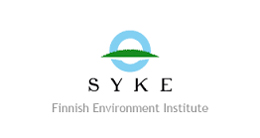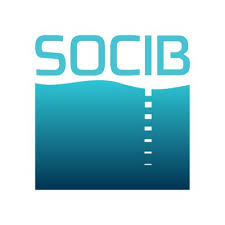Chlorophyll pigment concentrations in water bodies
Type of resources
Available actions
Topics
INSPIRE themes
Keywords
Contact for the resource
Provided by
Years
Formats
Representation types
Scale
Resolution
-

SYKE Alg@line project in the Baltic Sea monitors the state of the sea and detects algal blooms. Several millions of data points are collected annually from the Baltic Sea, using a fleet of 5-7 ferries. Two best equipped ferries offered in TNA are m/s Silja Serenade, which travels daily between Helsinki and Stockholm (Sweden) and m/s Finnmaid, which travels approx. twice a week from Helsinki to Travemünde (Germany) and back. Both ferries are equipped with flow-through system with thermosalinograph, chlorohyll, phycocyanin and CDOM fluorometers, turbiditymeter and refrigerated.sampling unit providing discrete water samples for laboratory analyses (e.g. microscopy, flowCAM, nutrients, optical analysis, experimental work). Additional sensors e.g. for primary production (FRRF) and light reflectance are used periodically, new sensors for light absorption and pCO2 will be soon implemented. Data can be retrieved in real time using satellite or GSM connection (basic sensors) or downloaded during harbour visits (additional sensors). Alg@line data is available e.g. through MyOcean and has also been delivered to users based on mutual cooperation, including scientific advice. Algaline ships maintained by SYKE host measurement systems from other countries, and periodically they are used as platforms for international short-term studies.
-

The SOCIB Glider Facility is an example of new technologies being progressively implemented in coastal to open ocean regions allowing autonomous and sustained high-resolution monitoring of specific areas. SOCIB-GF is fully operational in JERICO-NEXT and since 2006 has accomplished 64 missions, 1.244 days in water, 14.555 nm navigated with 39.378 vertical profiles collected. SOCIB-GF human team is composed out of 2 full-time engineers, 1 full-time technician, 2 part-time field-technicians (for at sea operations), 2 part time engineers (for glider data management) and 2 part-time experienced scientists. An intense and fruitful collaboration with IMEDEA (CSIC-UIB) team also exists since the origin of glider operations. The fleet in 2016 consists of 7 Slocum gliders and 2 iRobot Seagliders, equipped for collecting both physical (T, S) and biogeochemical data (fluorescence, oxygen, etc.) at high spatial resolutions (2km). SOCIB-GF includes a pressure chamber (1.000 m) as well as ballasting and operations labs. It also has access to other SOCIB facilities such as (1) ETD (Engineering & Technology Development): Hurricane Zodiac 9.2 m RIB, Lab-Van and harbour warehouse; (2) SOCIB-R/V: a 24 m coastal catamaran and (3) Data Center: including data management, public repository, on-line web-based platform tracker -for mission monitoring- and development of tools such as the glider processing toolbox (Troupin et al., Methods in Oceanog., 2015, - freely available scripts available at https://github.com/socib/glider_toolbox).
-

SYKE Alg@line project in the Baltic Sea monitors the state of the sea and detects algal blooms. Several millions of data points are collected annually from the Baltic Sea, using a fleet of 5-7 ferries. Two best equipped ferries offered in TNA are m/s Silja Serenade, which travels daily between Helsinki and Stockholm (Sweden) and m/s Finnmaid, which travels approx. twice a week from Helsinki to Travemünde (Germany) and back. Both ferries are equipped with flow-through system with thermosalinograph, chlorohyll, phycocyanin and CDOM fluorometers, turbiditymeter and refrigerated sampling unit providing discrete water samples for laboratory analyses (e.g. microscopy, flowCAM, nutrients, optical analysis, experimental work). Additional sensors e.g. for primary production (FRRF) and light reflectance are used periodically, new sensors for light absorption and pCO2 will be soon implemented. Data can be retrieved in real time using satellite or GSM connection (basic sensors) or downloaded during harbour visits (additional sensors). Alg@line data is available e.g. through MyOcean and has also been delivered to users based on mutual cooperation, including scientific advice. Algaline ships maintained by SYKE host measurement systems from other countries, and periodically they are used as platforms for international short-term studies.
-

Socib Glider
-

Socib Glider
-

Socib Glider
-

Socib Glider
-

Socib Glider
-

COSYNA (Coastal Observation System for Northern and Arctic Seas) is an operational coastal monitoring, forecasting and information system for the North Sea composed by fixed platforms, FerryBoxes, gliders and HF-radar systems. It is being developed by institutes of the German Marine Research Consortium (KDM) and collaborating institutions and is operated by the HZG Research Centre. The infrastructure represents an investment of 9 M €. It was build up since 2007 and is fully operational since 2012. COSYNA_SFB is a Stationary FerryBox system, including self-cleaning features, installed in a container at the mouth of the Elbe River equipped with sensors T, C/S, turbidity, DO, pH, chlorophyll-afluorescence, CDOM fluorescence, nutrients (NOx, NO2, PO4, SiO2) and a cooled water sampler.
-

Socib Glider
 Metadata catalogue
Metadata catalogue